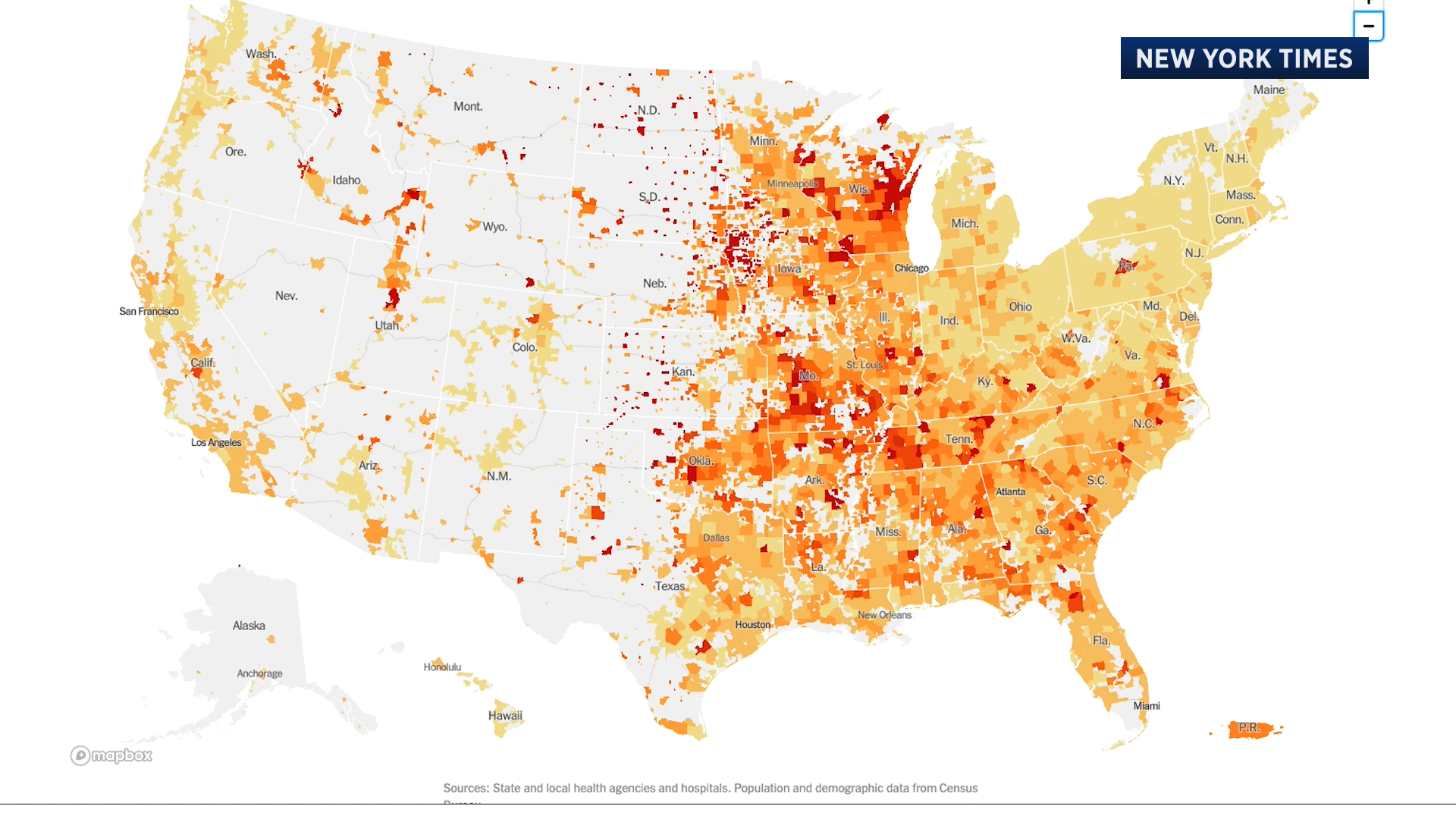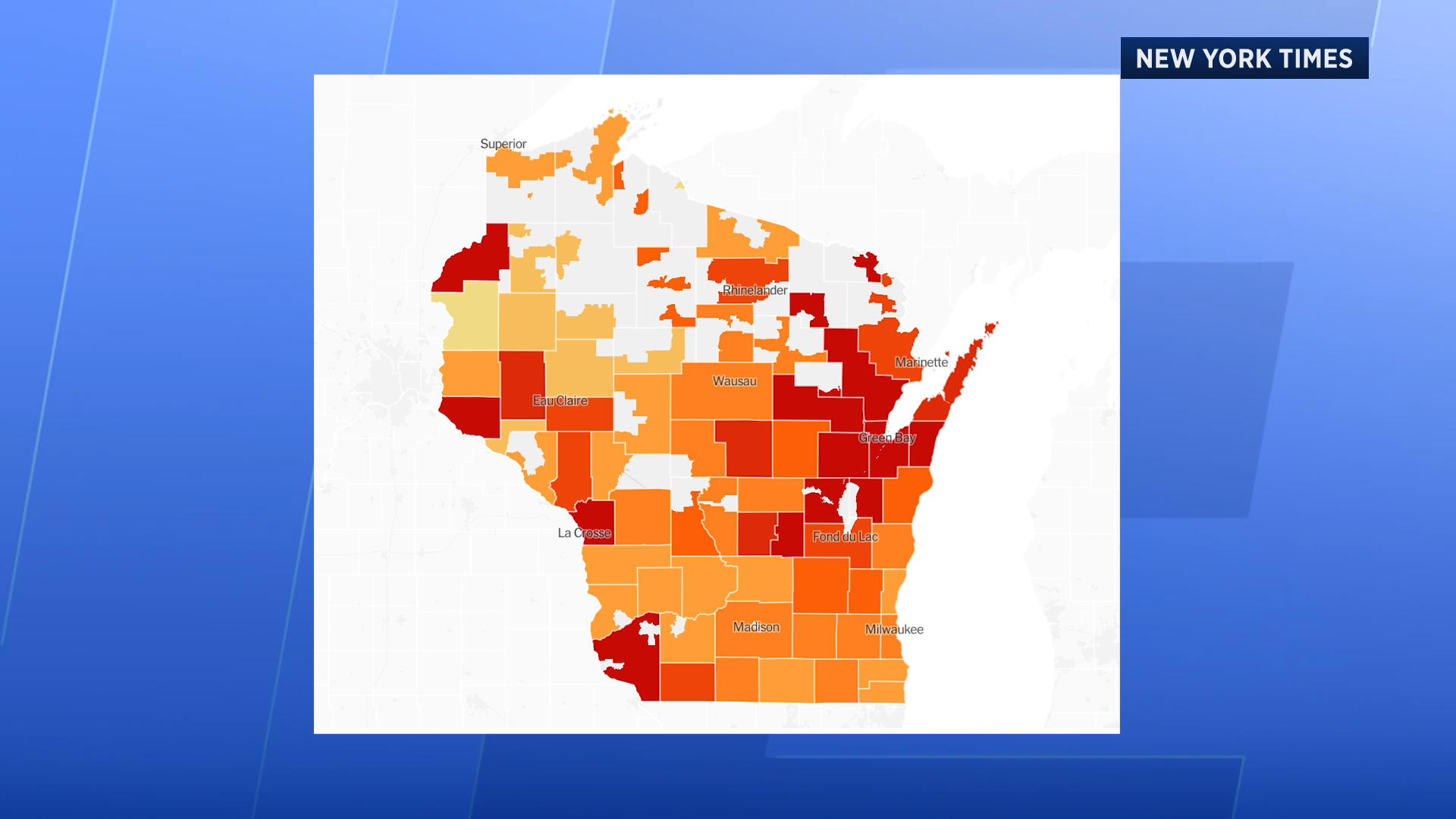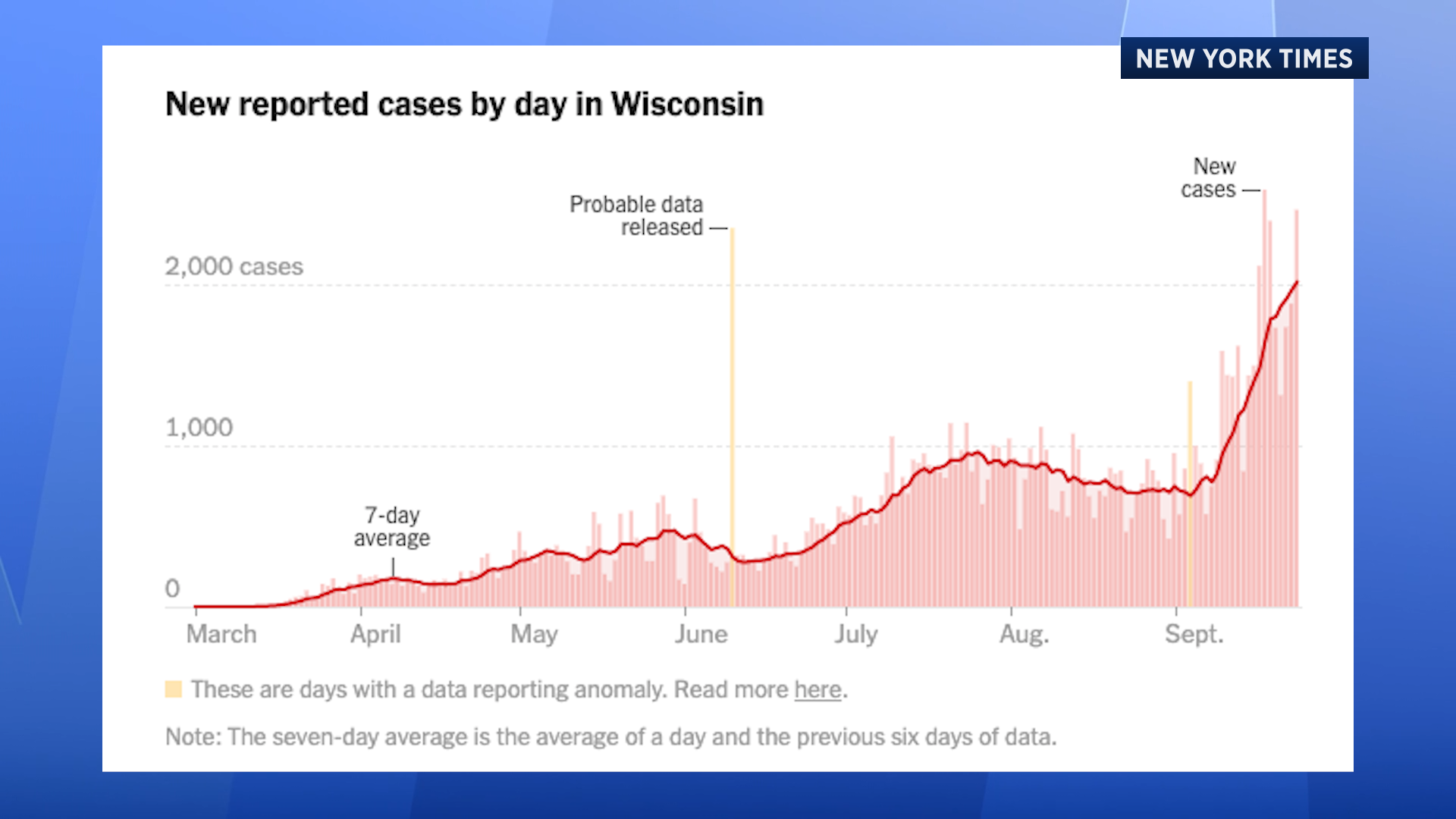MADISON, Wis.— Coronavirus is spreading more and more across the Badger State, and to areas with more seniors who could be at higher risk of complications or death.
Wisconsin ranks third in the country in the number of cases per capita, meaning per 100,000 people. On average, 2,000 Wisconsinites tested positive for coronavirus every day this week. That’s now doubled. Just a few weeks ago, in the beginning of September, about 1,000 people were testing positive per day.

In the maps from the New York Times, the more red an area is, the higher the infection rate.
Forest County ranks highest per capita in the state. While only about 9,000 people live there, if you adjust for population size, 773 people per 100,000 would test positive. Three percent of the county’s population have COVID-19.
The Fox Valley is the main area of concern. La Crosse, Shawano, and Kewaunee Counties also have high infection rates.

“The Northeast area of the state is experiencing a surge in hospitalization,” said Dr. Ajay Sethi, who teaches Population Health Sciences at UW-Madison. “So of course, everybody's concerned about that. We don't want it to get any more out of control than it already feels like it is.”
Meanwhile, hospitalizations are also rising. Doctors worry that could very quickly get out of control, especially in areas like Forest County that don’t have as many hospitals.
“We're hearing from the Wisconsin Hospital Association that capacity is starting to get tight up there. That's a recipe for disaster,” said UW Health Chief Quality Officer Dr. Jeff Pothof. “Worst case scenario is lots of COVID-19. Lots of people who require healthcare resources, and hospitals not having them to provide to patients. That's when bad things start to happen.”
While college campuses have contributed to spikes in cases in some areas of the state, that’s not true everywhere. While UW-Madison has been an issue in Dane County, Forest County has a far higher infection rate.
Plus, in an area like Forest County, the average age of the residents is much higher. “Some of those Northern counties, you have individuals who are older,” Sethi said. “And everyone knows age increases the risk of having more severe COVID.”
It’s safe to say just about everybody is feeling COVID fatigue. Wearing a mask gets old, we want to see our friends and family, and it’s hard to combat our own human nature to connect with others.
Pothof and Sethi believe that fatigue is leading to a rise in cases.
“We’re getting more comfortable with COVID-19. I think back in March, April, May, it was a relatively new thing,” said Pothof. “People didn't know what to do and I think they took [recommendations] to heart a little more closely.”
“It is human nature that if you don't have that heightened sense of risk … not knowing someone who's had COVID or has been hospitalized for COVID, you wonder ‘why am I taking these precautions?’” Said Sethi. “Over time, though more people are understanding that individuals can get COVID that individuals can be hospitalized and even die from COVID.”
Both said if people want to get anywhere close to back to normal before a vaccine is available, Wisconsinites have got to buckle down.
“Are we satisfied with this many deaths that were mostly avoidable? I hope nobody is,” said Sethi. “I hope that provides some motivation for people to do what they need to do to stop this spread.”

“There is no path of life getting back to normal that consists of us just pretending this isn't happening. And doing what we always did. That will be the longest hardest, most sour, awful road to get there,” said Pothof. “The way to get there sooner is to say, yeah, this sucks. But I'm going to mask up, I'm going to keep my distance.”
“We’re going to look out for each other. That's how we beat this,” said Pothof. “That's how we get back to normal.”



